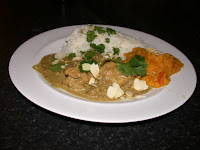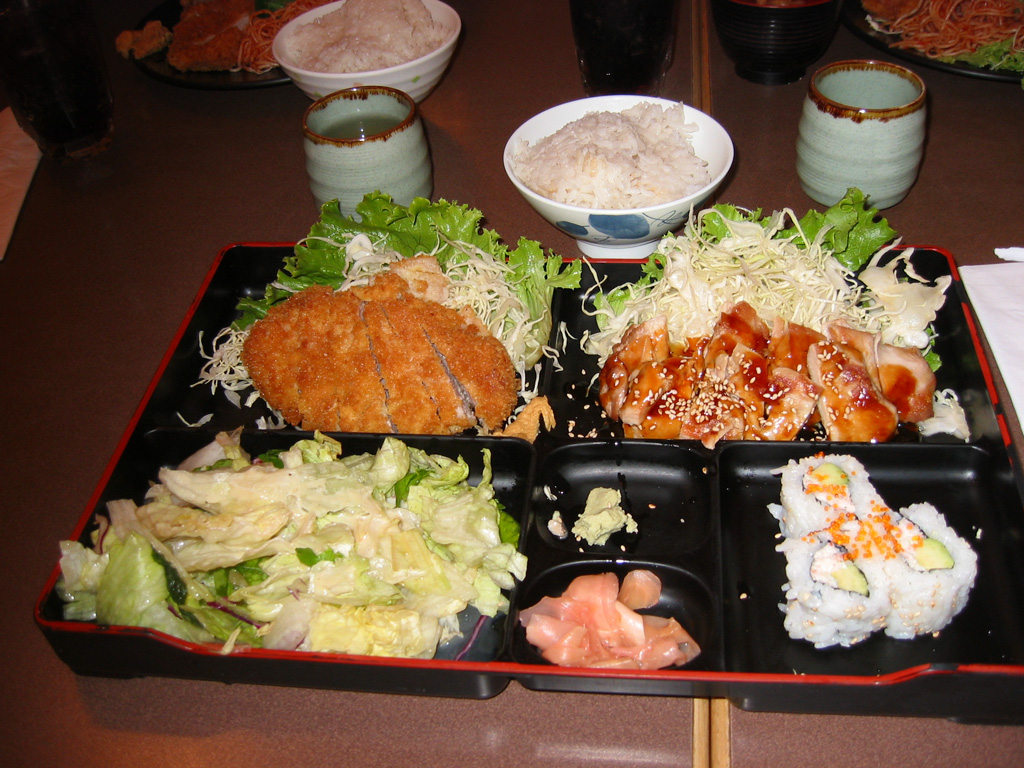
 By: Malika Harricharan, SITE
By: Malika Harricharan, SITEIndian Food and Indian Restaurants are common in many parts of the world , but in my pocket of the world they seem to be few and far between. I realized that many Americans may not be accustomed to Indian Food; what to order at an Indian Restaurant or the proper way to eat Indian Food. Since I grew up eating Indian Food, it is natural for me to tear my naan up and soak up the yummy curry. That is why I wanted to put together a short article outlining some common Indian dishes and what you may want to order at an Indian Restaurant. I hope this will encourage you to give Indian Food a try.
More than likely, you will start out with complimentary poppadoms. These are like very thin crackers, but much larger. There are usually 3 sauces or chutneys that go along with poppadoms, a lime green sauce made with cilantro that is somewhat spicy, a dark brown sauce which is very sweet (save some for later, I will tell you why in a moment), and a mango chutney which is very good but pretty hot.
Appetizers:
More than likely you will see Samosas on a an appetizer menu at Indian restaurants. These are a safe option as they are full of flavor but not spicy. They are triangular pastries that are filled with potatoes, peas and other vegetables. The sweet, brown chutney I told you to hang on to goes great on these.
Main Entrees:
Tandoori: Tandoori is always a safe option. This is not a hot and spicy dish at all. It has no heavy sauce to it either. It is simply cooked in a clay oven known as a Tandoori, hence the name. Do not be freaked out by the color. It will come out with a red color especially if you order the chicken. It looks a little weird but it tastes great.
Biryani: (Pronounced beer-e-ani)Think of Biryani as the Indian version of Chinese Fried Rice. It is rice with vegetables (usually including raisins) with your choice of meat. Lamb Biryani is really good. Really it is good with any meat. I probably would not recommend getting Biryani with shrimp. Again, this is another safe choice as it will not be a spicy dish.
Curry: This is really a thick gravy full of cumin, garlic, tamarind and a bunch of other tasty spices made to the hotness of your request. Curry is by far the most well known Indian dish. I like it with beef, lamb, chicken or shrimp.
Masala: This is a creamy tomato sauce which is extremely tasty. Usually it is not overly spicy but you should ask just to be sure. One of my favorites at Indian Restaurant is Chicken Tikka Masala. As a matter of fact, I read somewhere that Chicken Tikka Masala is the number one most ordered dish in England. Having a large Indian population, Indian restaurants seem to pop up everywhere in England. In fact, Indian Food is all I ever want to eat when I go to England.
Vindaloo: (Pronounced Vind-aloo) HOT HOT HOT!! This is one of the hottest dishes you can order. Again, it is made with various spices like curry, but it is really hot. It is so hot in fact, I am not able to eat it and enjoy it. To my palette, the pepper overpowers any other flavor and I cannot enjoy the dish. WARNING: This dish is not for an Indian Food virgin.
It is typical for these dishes to come with basmati (Indian white rice). But you are missing out if you do not order some delicious nann (bread pancakes) to eat with your curry. Part of the experience of eating Indian Food is using your hands to soak up the gravy with the naan.
Although there are various types of naan I recommend starting with something simple like plain nann, or garlic. You usually get 2 pieces which is a gracious plenty for 1 person. You might want to consider 2 orders for 2 people and if there are leftovers they are great for breakfast in the morning.
Indian restaurants do not typically offer any vegetable side dish with the entrees. This is probably because so many Indians are vegetarians, the vegetable entrees are a main course by themselves. Indian curries tend to have very rich sauces and those along with rice and naan will fill you up quickly. But if you feel it necessary to order a vegetable I recommend something with aloo (potato) or baigon (eggplant).










